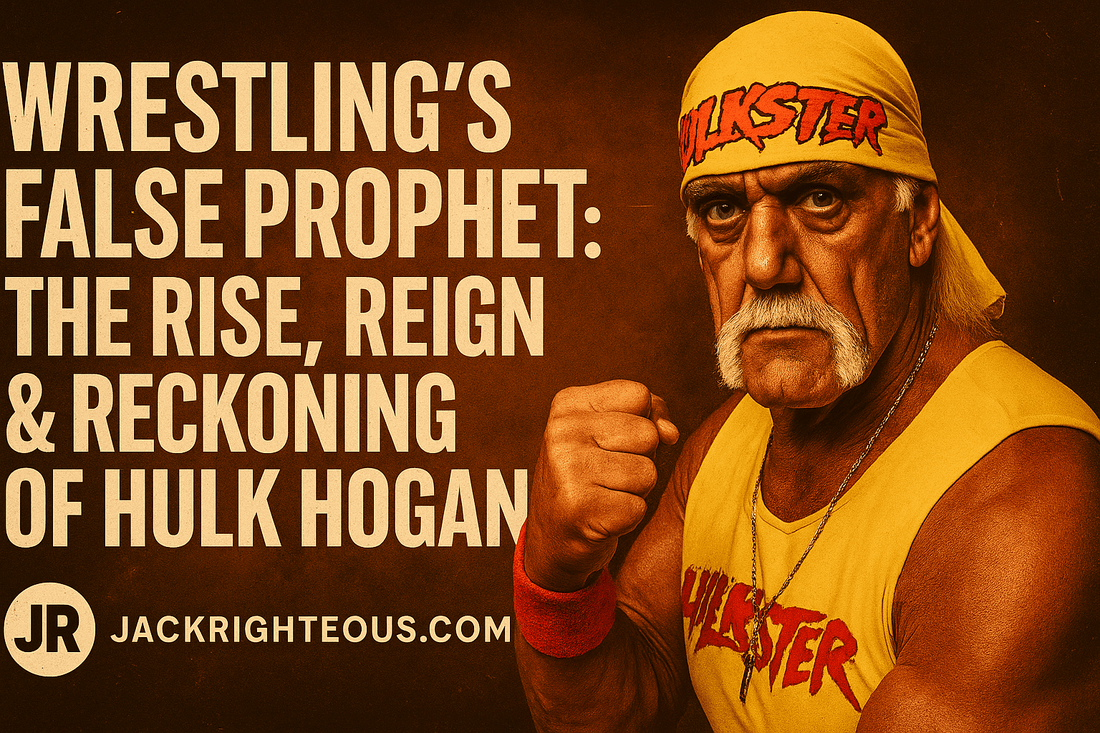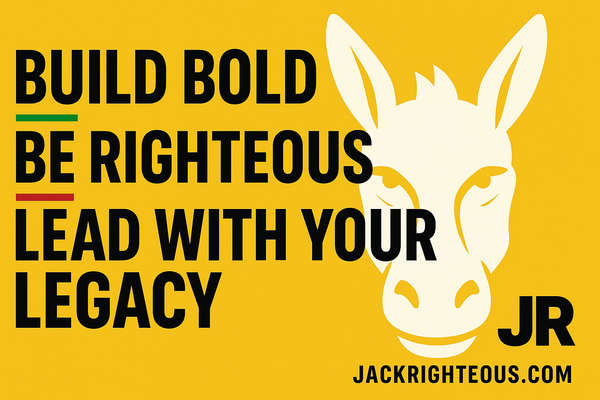
Hulk Hogan: Wrestling's False Prophet Exposed
Gary Whittaker
Wrestling’s False Prophet: The Rise, Reign & Reckoning of Hulk Hogan
(Personal note from the author: I grew up loving wrestling. Like millions of kids, I believed in Hulkamania. I cheered for Hogan, ate my vitamins, and thought he stood for every man. But even as a young fan, I cringed at how unfairly wrestlers like The Junkyard Dog were treated compared to the blond hero. Years later, when fans chose Hogan over The Rock in that infamous face-off, I remembered what I’d seen as a kid—the big blond frame often got more love than it deserved. In 2025, we see that truth more clearly. This isn’t me telling anyone what to think about Hogan. People can love what someone created without excusing their flaws. This article is just my take as a fan who adored the character, but can’t ignore the man behind it.)
They said their prayers. They ate their vitamins. They believed in Hulkamania like it was gospel. But what happens when the preacher of power and positivity is exposed as a man with skeletons bigger than his biceps? This isn’t hero worship, and it isn’t a eulogy—it’s a reckoning. A deep dive into wrestling’s most mythic figure, a larger-than-life persona built on charisma, controversy, and compromise, where the lines between icon and illusion blurred long before the lights went out.
From Terry Bollea to Hulk Hogan: Birth of a Legend
Terry Eugene Bollea was a big kid from Tampa with a bass guitar and a dream. He idolized baseball players and rock stars before wrestling found him. Hiro Matsuda famously broke his leg in training to test his resolve. The pain baptized him into a new identity. Terry became Hulk Hogan, a character so colossal he eclipsed the man behind the mask. Early Florida territories painted a picture of a hungry but politically savvy newcomer, charming promoters, muscling past rivals, and making sure the spotlight followed him wherever he went.
The Making of a Messiah: Hulkamania’s Holy War
1984. Hogan beats The Iron Sheik and Hulkamania is born. It wasn’t just wrestling—it was worship. WWF sold more than action figures; they sold faith. A gospel of vitamins, prayers, and the dream that good guys always win. Rick Derringer's anthem Real American blasted through arenas:
"I am a real American, fight for the rights of every man. I am a real American, fight for what's right, fight for your life!"
Decades later, those lyrics rang hollow after Hogan’s racist remarks surfaced, revealing a faith that excluded more people than it embraced. The supposed champion of “fighting for what’s right” fought nothing for Black wrestlers sidelined in his era, and his leaked words exposed a reality that the myth could never cover.
The Hogan Files: Power, Politics, and Protected Spots
Behind the curtain, friendships with Vince McMahon ensured Hogan’s dominance lasted far beyond merit. Careers were stalled, storylines rewritten, and rivals buried so the legend could survive. His later alliance with Donald Trump blurred entertainment and politics, building a brand image of American power that masked hypocrisy under the red-and-yellow bandana.
Steroids and the Superhero Physique
In the 90s, the federal steroid scandal tore the mask off. Hogan admitted under oath that his body wasn’t just vitamins and hard work. Fans learned what many wrestlers already knew—success often came in syringes, not prayers. McMahon walked free, but faith in the “Real American” was forever fractured.
Behind the Bandana: Racism, Redemption, and the Mask Slipping
Years later, the leaked tapes confirmed what some suspected: Hogan’s “fight for every man” didn’t include every man. WWE erased him from history overnight. His apologies felt rehearsed, and the pain he caused lingered among fans and wrestlers who once looked to him as proof that good triumphs over evil.
Top 10 Defining Moments of Hogan’s Career – Myths and Memories
- Icon vs Icon – The Rock vs Hogan (WrestleMania X-8, 2002) – a reluctant passing of the torch.
- Goldberg’s upset (Nitro, 1998) – reality breaking through the script.
- Feud with DDP (1997) – rare generosity in pushing another star.
- The heel turn to nWo (Bash at the Beach, 1996) – a hero dies, a villain rises.
- The slam of André the Giant (WrestleMania III, 1987) – wrestling’s defining spectacle.
- Double Royal Rumble wins (1990-91) – more politics than power.
- Passing the torch to Ultimate Warrior (WrestleMania VI, 1990) – a hope unfulfilled.
- Mega Powers explode (WrestleMania V, 1989) – betrayal in prime time.
- Mega Powers unite (1988) – a fragile alliance.
- First WWF Title Win (1984) – Hulkamania ignites, a savior crowned.
Final Act: Death, Divorce, and a Fractured Family
On July 24, 2025, the “immortal” Hulk Hogan died of cardiac arrest in his Clearwater home. What remained was not a god, but a flawed man: estranged from his daughter Brooke, remembered fondly but painfully by ex-wife Linda, mourned by widow Sky Daily, who revealed his long battle with health issues that few knew about. Fame had filled arenas, but left his family with empty seats and deeper wounds.
Legacy After-Life: Tributes and the Joey Swoll Controversy
Tributes poured in from icons and fans who once believed in Hulkamania. But the backlash came fast. Joey Swoll’s cosplay tribute turned into public outcry as people resurfaced Hogan’s racism and manipulation. Swoll left social media in shame after admitting he learned “how horrible that man truly was.” Hogan’s legend couldn’t even die clean—it dragged fresh pain in its wake.
Reckoning with a False Prophet
Hulk Hogan isn’t just a wrestler. He’s a warning. A monument to blind hero worship and corporate myth-making. A man who swore to fight for every man but left many behind. The prayers, the vitamins, the anthem—they built an idol that fans now know was clay beneath the muscle. Hulkamania may live forever, but so will the truth about its false prophet.

